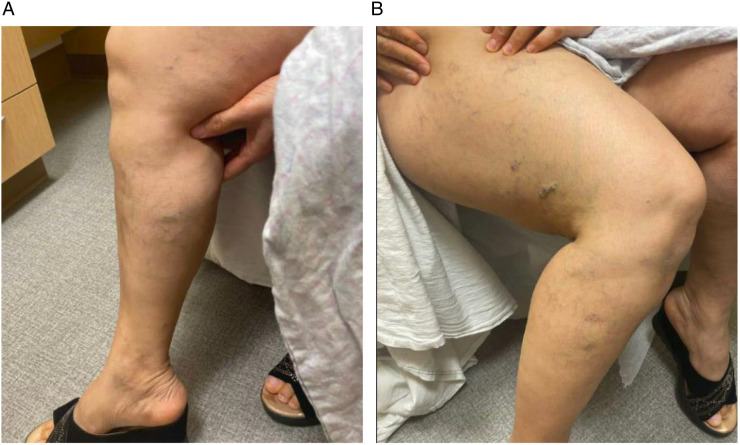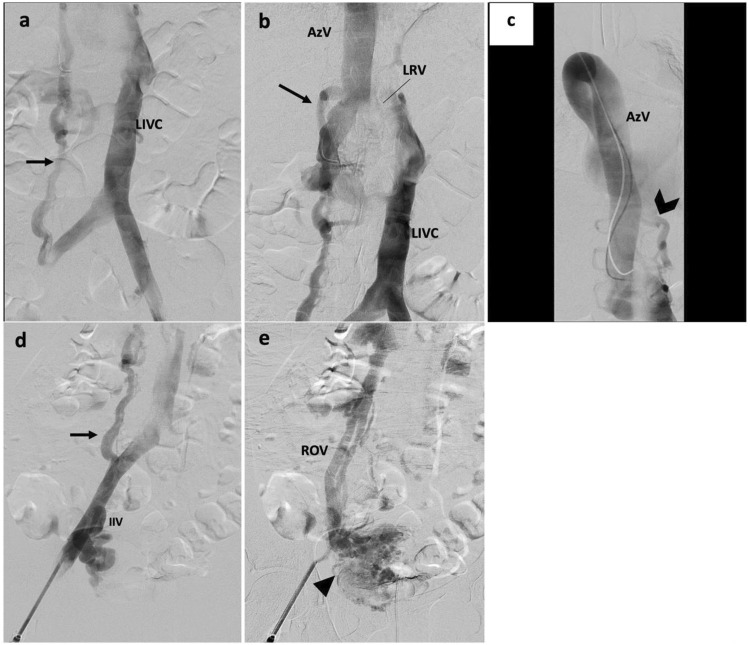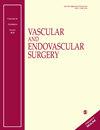Left Inferior Vena Cava With Infrahepatic Disruption, Azygos Continuation, and Retroaortic Left Renal Vein - A Complex, Symptomatic Caval Anomaly Managed With Endovascular Intervention.
IF 0.7
4区 医学
Q4 PERIPHERAL VASCULAR DISEASE
Vascular and Endovascular Surgery
Pub Date : 2023-10-01
Epub Date: 2023-04-21
DOI:10.1177/15385744231171199
引用次数: 0
Abstract
Background: Complex congenital anomalies of the inferior vena cava (IVC) are rare sequelae of inappropriate persistence or regression of embryological precursor veins. These anomalies are typically asymptomatic and generally do not warrant intervention. Case Presentation: Here we present a case of severely symptomatic left IVC with infrahepatic disruption, azygos continuation, and retroaortic left renal vein causing symptoms of severe pelvic congestion and recurrent miscarriages (8 total) in a 41 year old female. The patient was treated with stenting of the compressed retroaortic portion of the IVC/left renal vein. Four months post-procedure, the stent remained patent and the patient reported considerable improvement in their venous congestion symptoms. Most notably, as of the writing of this report, the patient is 38 weeks pregnant. Conclusions: The case is notable for its severe symptomatology of pelvic venous disease including recurrent miscarriage. More importantly, it represents the first documented case of successful retroaortic endovascular management of such a venous anomaly, in which the entirety of the typical IVC drainage occurred via a compressed left-to-right retroaortic crossover.



左下腔静脉伴肝下破裂、翼静脉连续和主动脉后左肾静脉-一种复杂的、症状性的静脉异常,通过血管内介入治疗。
背景:复杂的先天性下腔静脉畸形(IVC)是胚胎前静脉不适当持续或消退的罕见后遗症。这些异常通常是无症状的,通常不需要干预。病例介绍:我们报告了一例41岁女性的严重症状左IVC,伴有肝下破裂、奇静脉持续和左肾皮质后静脉,导致严重盆腔充血和反复流产的症状(共8例)。患者接受了IVC/左肾静脉皮质后压缩部分的支架植入治疗。术后四个月,支架仍然是专利的,患者的静脉充血症状有了显著改善。最值得注意的是,截至撰写本报告时,患者已怀孕38周。结论:该病例因其严重的盆腔静脉疾病症状而引人注目,包括反复流产。更重要的是,它代表了第一个记录在案的成功的皮质后血管内治疗这种静脉异常的病例,其中整个典型的IVC引流都是通过压缩的从左到右的皮质后交叉进行的。
本文章由计算机程序翻译,如有差异,请以英文原文为准。
求助全文
约1分钟内获得全文
求助全文
来源期刊

Vascular and Endovascular Surgery
SURGERY-PERIPHERAL VASCULAR DISEASE
CiteScore
1.70
自引率
11.10%
发文量
132
审稿时长
4-8 weeks
期刊介绍:
Vascular and Endovascular Surgery (VES) is a peer-reviewed journal that publishes information to guide vascular specialists in endovascular, surgical, and medical treatment of vascular disease. VES contains original scientific articles on vascular intervention, including new endovascular therapies for peripheral artery, aneurysm, carotid, and venous conditions. This journal is a member of the Committee on Publication Ethics (COPE).
 求助内容:
求助内容: 应助结果提醒方式:
应助结果提醒方式:


